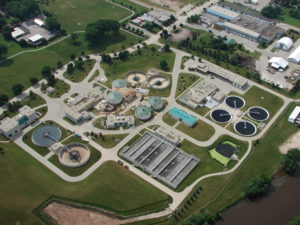 Vision Statement
Vision Statement
To become an innovative and resilient clean water enterprise revolutionizing the recovery of valuable resources for water and environmental sustainability.
Mission Statement
Our mission is to operate and maintain the Fond du Lac Regional Wastewater Treatment & Resource Recovery Facility in a cost-effective manner, producing effluent water that achieves permit requirements and recovering valuable resources such as energy, biosolids, and nutrients to be used in an environmentally beneficial manner.
 Values
Values
Responsiveness: We will provide collection and wastewater services that are timely and serve the needs of our customers and communities all day, every day.
Safety: We will work safely and protect ourselves and others before all other priorities.
Strategic Thinking: We commit to implementing projects, programs, and processes that promote sustainability and meet the needs and challenges of our wastewater and resource recovery facility.
Environmental Responsibility: We will manage water as a limited but renewable natural resource in accordance with regulatory requirements and through coordination, participation, and education with other stakeholder organizations.
Teamwork: We will promote communication, unity, and cooperation among staff, as well as with our customers and stakeholders, in order to meet the common purpose of achieving the mission, vision, and work of the department.
Integrity: We will act in an honest, ethical, professional, and respectful manner with each other and our customers, take personal responsibility, and be accountable for achieving results.
 Fond du Lac Regional Wastewater Treatment & Resource Recovery Facility
Fond du Lac Regional Wastewater Treatment & Resource Recovery Facility
The Fond du Lac Regional Wastewater Treatment & Resource Recovery Facility serves the City of Fond du Lac and eighteen neighboring communities. Every day the wastewater treatment plant treats approximately 8-10 million gallons of wastewater in order to protect public health and the environment.
The 2008 project was the fifth major project on the current site including projects in 1927, 1949, 1964, and 1975. Elements of 1949, 1964, and 1975 facilities were reused to provide added features at little or no cost.
Facilities from the 1949 plant as well as the 1974 plant were retained to provide additional treatment capacity for abnormally high flows at a low cost to system users. These facilities provide the necessary treatment to comply with permit requirements. Digestion facilities originally constructed in 1964 were recommissioned with the 2008 project to provide biosolids digestion and storage.

